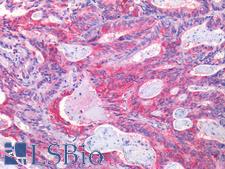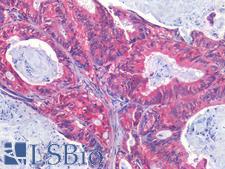Login
Registration enables users to use special features of this website, such as past
order histories, retained contact details for faster checkout, review submissions, and special promotions.
order histories, retained contact details for faster checkout, review submissions, and special promotions.
Forgot password?
Registration enables users to use special features of this website, such as past
order histories, retained contact details for faster checkout, review submissions, and special promotions.
order histories, retained contact details for faster checkout, review submissions, and special promotions.
Quick Order
Products
Antibodies
ELISA and Assay Kits
Research Areas
Infectious Disease
Resources
Purchasing
Reference Material
Contact Us
Location
Corporate Headquarters
Vector Laboratories, Inc.
6737 Mowry Ave
Newark, CA 94560
United States
Telephone Numbers
Customer Service: (800) 227-6666 / (650) 697-3600
Contact Us
Additional Contact Details
Login
Registration enables users to use special features of this website, such as past
order histories, retained contact details for faster checkout, review submissions, and special promotions.
order histories, retained contact details for faster checkout, review submissions, and special promotions.
Forgot password?
Registration enables users to use special features of this website, such as past
order histories, retained contact details for faster checkout, review submissions, and special promotions.
order histories, retained contact details for faster checkout, review submissions, and special promotions.
Quick Order
PathPlusTM EPHB2 / EPH Receptor B2 Antibodies
EPHB2 is a receptor tyrosine kinase that binds transmembrane ephrin-B family ligands residing on adjacent cells. This leads to contact-dependent bidirectional signaling into neighboring cells. EPHB2 has important functions in axon guidance during development, and participates in the guidance of commissural axons that form a major interhemispheric connection between the 2 temporal lobes of the cerebral cortex. It is also involved in the guidance of contralateral inner ear efferent growth cones at the midline and of retinal ganglion cell axons to the optic disk. In addition to axon guidance, EPHB2 regulates dendritic spine development and maturation and stimulates the formation of excitatory synapses. EPHB2 also controls other aspects of development including angiogenesis, palate development and in inner ear development through regulation of endolymph production. In breast cancer, EPHB2 expression is positively correlated with HER2 expression. Furthermore, localization of EPHB2 is associated with survival; cytoplasmic positivity in cancer cells may be predictive of poor prognosis while primarily membranous staining may indicate better overall recurrence-free survival. In immunohistochemistry, EPHB2 has membranous and cytoplasmic positivity in many tissues throughout the body. It is found in neurons throughout the brain, with high positivity in the cerebral cortex, hippocampus, basal ganglia and cerebellum.
References: The UniProt Consortium. Nucleic Acids Res. 47: D506-515 (2019); Nucleic Acids Res. 2016 Jan 4;44(D1):D733-45, PMID:26553804; Oncotarget. 2016 Apr 19;7(16):21362-80, PMID: 26870995;
2 PathPlusTM Antibodies


☰ Filters
Products
Antibodies
(2)
Type
Primary
(2)
Target
EPHB2 / EPH Receptor B2
(2)
Reactivity
Human
(2)
Mouse
(1)
Rat
(1)
Monkey
(1)
Rabbit
(1)
Zebrafish
(1)
Application
IHC
(1)
IHC-P
(2)
Host
rabbit
(2)
Product Group
PathPlus Cancer
(2)
Clonality
polyclonal pc
(2)
Format
Unconjugated
(2)
Epitope
C-Terminus
(1)
Internal
(1)
Publications
No
(2)

Cancer
Fast Shipping
EPHB2 / EPH Receptor B2 Rabbit anti-Human Polyclonal (Internal) Antibody
Zebrafish, Rat, Rabbit, Mouse, Human, Monkey
IHC, IHC-P
Unconjugated
50 µg/$440

Cancer
Fast Shipping
EPHB2 / EPH Receptor B2 Rabbit anti-Human Polyclonal (C-Terminus) Antibody
Human
IHC-P
Unconjugated
50 µg/$440
Viewing 1-2
of 2
product results










